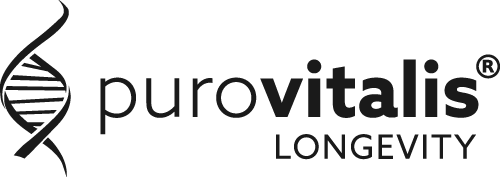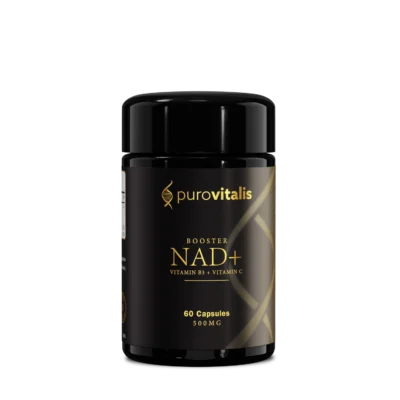
Both NMN and NR have been gaining popularity as NAD+ precursor supplements. NAD+ or Nicotinamide Adenine Dinucleotide is a coenzyme vital to human cellular functions and longevity.
Nicotinamide Mononucleotide (NMN) and nicotinamide riboside (NR) are biosynthetic precursors to NAD+.
Before we dive in the NMN vs NR comparison let’s explain what NAD+ is.
NAD+ is a coenzyme that affects a lot of processes in our cells and is directly tied to aging. As a person undergoes metabolic stresses and gets older NAD+ levels in the cells decline. Low NAD+ levels cause tiredness, age-related muscle loss, cognitive decline, vision and hearing loss, and a shortened lifespan.
Not only that, but when you don’t have enough NAD+, your metabolism slows down: you gain weight easily and your risks of type 2 diabetes, metabolic syndrome, fatty liver, and other metabolic disorders increase.
NAD+ also turns on proteins called sirtuins, which control the health of cells.
See our detailed overview of NAD+ for more info.
Biotech firms concentrate on NMN rather than NR.
Numerous studies suggest that NAD+ levels decrease significantly during aging.
Restoration of NAD+ levels in aged animals extends lifespan and promotes health.
Many biotechnology companies have started looking into NMN and NR as longevity supplements. Taking both NR and NMN will increase NAD+ levels, even though in different ways.
All humans get NAD+ in their bodies thanks to a diet filled with NAD+ precursors in them. Both NMN and NR are precursors of NAD+, so which one acts better for your goal?
Acclaimed experts use NMN and not NR
One of the world’s foremost experts on longevity, Dr. David Sinclair of Harvard University has spent decades studying NR, NMN, and NAD+. He personally takes NMN, not NR. In terms of market availability, there are several NR and NMN supplements products available in the market.
Supplementing with either of these two molecules has been shown to raise NAD+ levels.
In terms of the difference between NMN and NR, there have been no conclusive studies done on humans. But the size of the molecules is an interesting difference between NMN and NR. Since NMN is bigger than NR, it usually has to be broken up to fit into the cell.
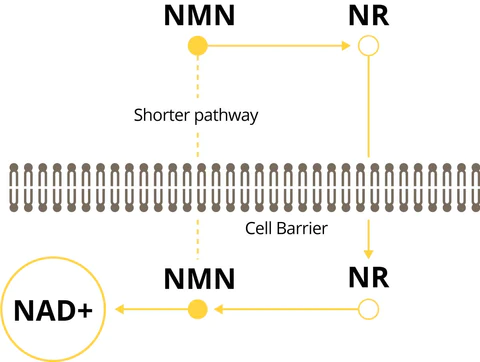
NMN is closer to NAD+ production
When compared to NR, NMN is already one step closer to making NAD+ than NR.
Here’s what happens on the way to NAD+:
- NR is changed into NMN, which is then used to make NAD+.
- NR => NMN => NAD+ => DNA repair and maintenance of the epigenome
So, NMN is one step further along the path to NAD+. First, NR needs to be phosphorylated to make NMN, which is then used to make NAD+.
The molecule NAD+ is what makes sirtuins and PARP enzymes work, that’s what we need to get, so theoretically supplementing NMN is the shortest path to that.
The major factors and differences
- Pathway Comparison for NMN vs NR: Compared to NR, NMN is already one step further down the pathway to produce NAD+. NR is transformed to NMN, and NMN is utilized to make NAD+. NR must first be phosphorylated to form NMN, which is then made into NAD+. Going for an NMN supplement will get you closer to producing your own NAD+
- Size Difference for NMN vs NR: NMN & NR molecules are smaller than NAD+ molecules. NAD+ is twice the size of NR & NMN. Out of the two, NR is smaller. While all 3 molecules have a low molecular weight, NMN needs to be broken down to fit into the cell.
Bioavailability of NMN vs NR
NR appears to be more bioavailable than nicotinamide. NR supplements boost blood and bone NAD+ levels, while NMN supplements boost NAD+ levels in different organs, including the brain.
Clinical Trials – NMN vs NR
Several clinical trials of NR have been completed. This includes randomized placebo-controlled trials (RCTs):
A 2016 study (Nature Communications, Trammell et al.) showed that 1000 mg/day of NR increased blood NAD+ by ~2.7-fold in healthy adults after 24 hours, with sustained increases over 8 weeks.
A 2019 study in The American Journal of Clinical Nutrition (Conze et al.) reported dose-dependent increases in blood NAD+ with 100–1000 mg/day NR.
As for NMN –
Mills et al., 2016, Cell Metabolism, found NMN supplementation restored NAD+ levels in liver, muscle, and kidney in aged mice, improving metabolic and mitochondrial function.
A 2019 study in Nature Communications (Grozio et al.) showed NMN increased NAD+ in the hypothalamus and other brain regions in mice, supporting neuronal health and cognitive function.
A 2021 study in Science (Youshino et al.) showed that NMN (250 mg/day) increased NAD+ metabolites in blood and improved muscle insulin sensitivity in healthy adults.
Stability for NMN vs NR
Another disadvantage of NR compared to NMN is that it is not stable on its own. Compared to NMN, NR needs chloride to make it stable.
- Taste for NMN vs NR: The taste of Nicotinamide Riboside Chloride is unpalatable in powder-form. This leads to the production of NR as pills and capsules. Given that NR needs to be a consumer in capsule form, NR must pass through the stomach and liver. There is gets metabolized, which reduces its effectiveness.
NMN is better than NR?
Presently, scientific evidence suggests that NMN is better than NR (nicotinamide riboside) as a NAD+ precursor. NMN is further down the NAD+ production pathway. On a molecular level, NMN resembles NAD+ more than NR.
Studies show more impressive results of NMN on many aging mechanisms than for NR.
Many well-known experts on NAD+ metabolism consume NMN and not NR.
This suggests increasing confidence in NMN, which might hint at something. Even though NR and NMN can be found in many foods, they are present in trace amounts, so supplementation is preferred. You cannot eat enough to boost the body’s NAD+ levels, so supplementing with an NAD+ precursor, ideally with NMN, can help mitigate this decline in the body’s nutrients.
You might find interesting: NAD vs NAC: What are the main differences?
So why is there so much talk about NR?
- Up until very recently, it was too expensive to make NMN. That’s why NR was chosen by a lot of companies.
- Since the way to make NR has been patented, many companies have had a reason to spend a lot of money on public relations to raise its profile, but NMN hasn’t had the money to do the same.
NMN vs NAD
When considering NMN vs NAD, research indicates that transformation between NR and NMN must take place to enter a few types of cells. Like we’ve explained above, NMN is one of the fastest means of stimulating NAD+ production. Except for the NAD metabolic pathway, NMN can also be added directly to cells without first being turned into NAD. Newly found transport proteins that increase when NAD decreases make this cyclical process possible. In this form, NMN helps cells get energy and also has anti-aging properties so cells can grow and repair themselves.
The decision to supplement with NMN for NAD+ provides a much more direct path to promoting cell metabolism.
To increase your body intake of NMN at a price that doesn’t hurt your wallet or your health, check out our offerings of NAD+ boosters, including our flagship liposomal NMN supplement.
References
- Preclinical and clinical evidence of NAD+ precursors in health, disease, and ageing
- Precursor comparisons for the upregulation of nicotinamide adenine dinucleotide. Novel approaches for better aging
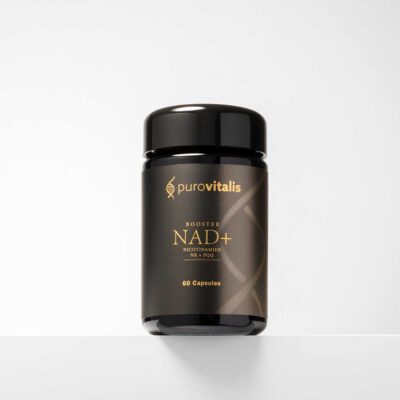
Boost Your NAD Levels Now
Discover our premium NAD+ booster and enhance your vitality.
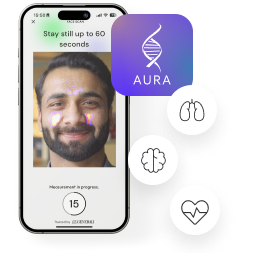
Track 20+ health metrics with AI-powered accuracy. Start your free trial today and take control of your wellness journey!


